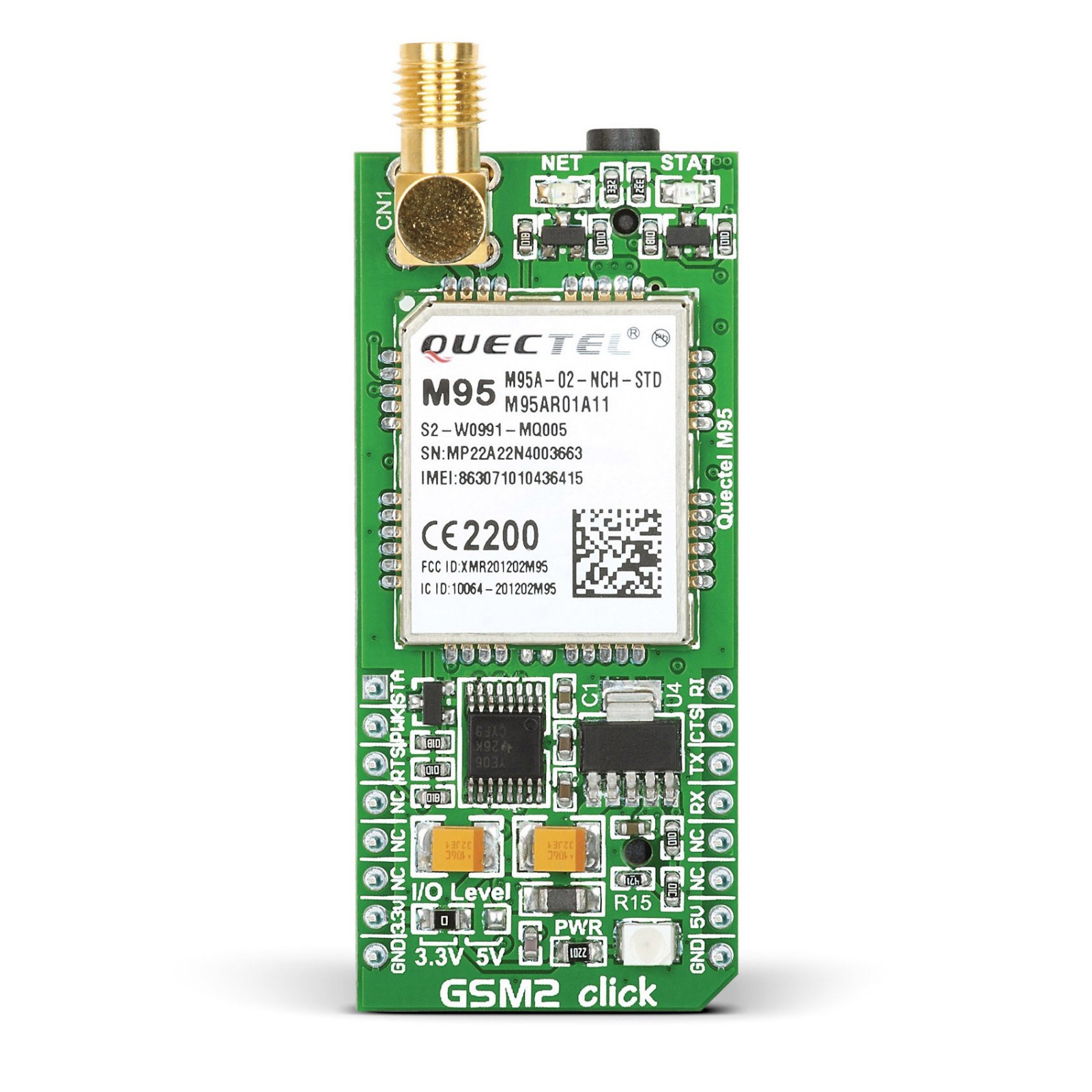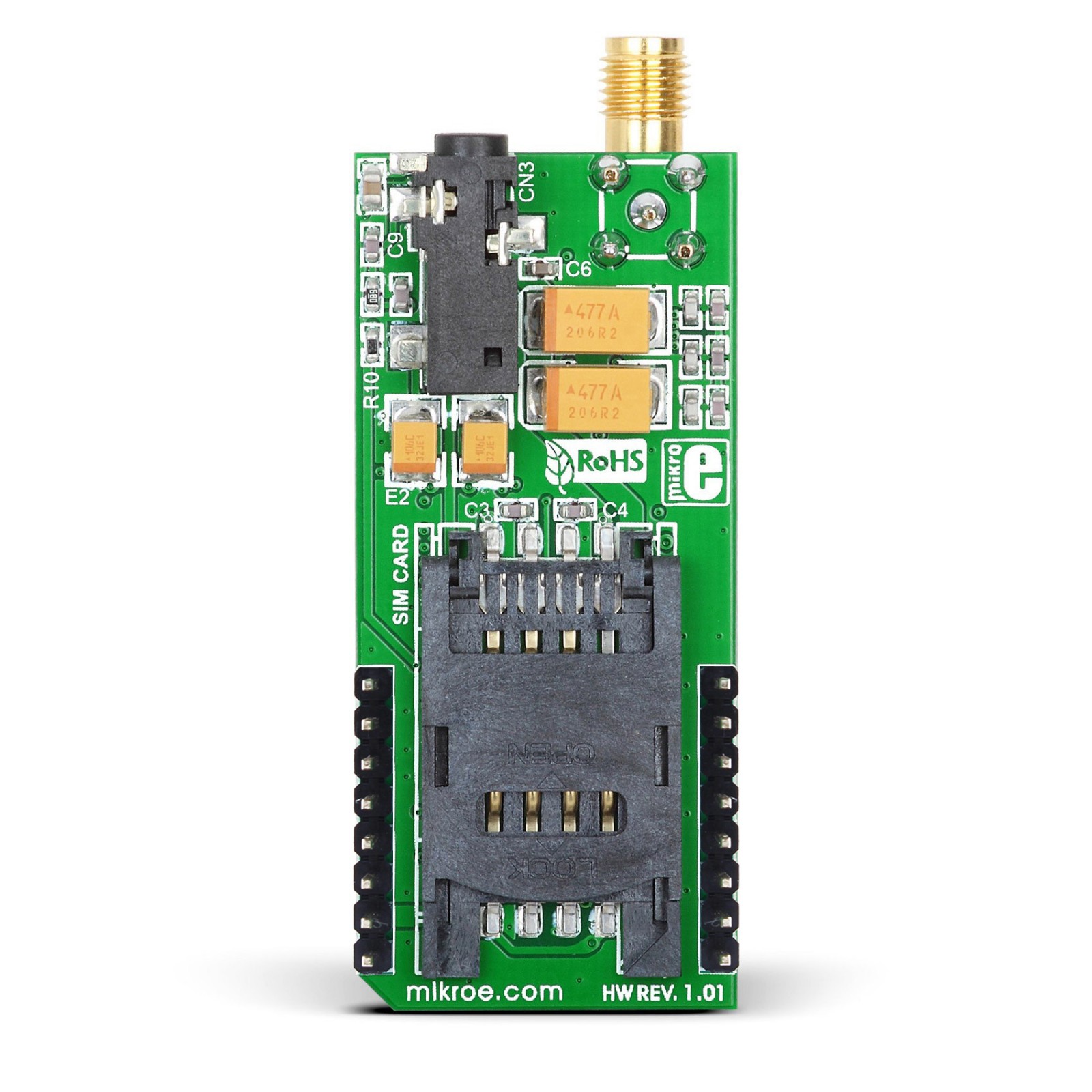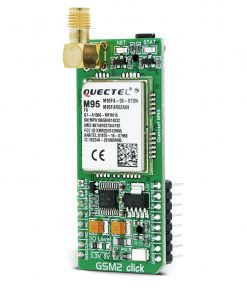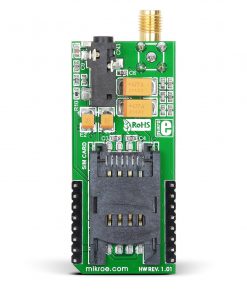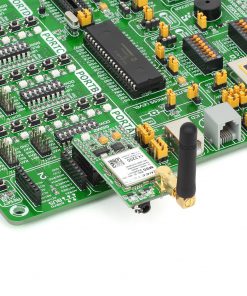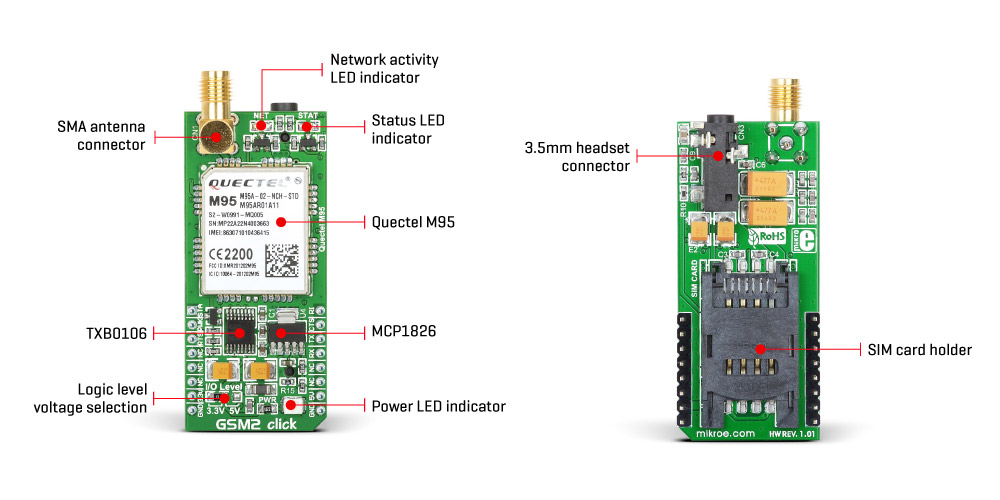GSM 2 Click is a compact add-on board representing a compact GSM cellular network communication solution. This board features the M95, a quad-band GSM/GPRS module from Quectel. This module features a full set of options for cellular networking and communication, such as network status indication, jamming detection, embedded internet protocols, including TCP/IP, UDP, FTP, PPP, HTTP, SMTP, full GPRS multi-slot class 12 implementation, it is fully compliant to GSM Phase 2/2+, and more. Data communication speed is rated up to 85.6 kbps for both uplink and downlink connection. The module offers a high-quality integrated audio interface, allowing voice communication over the onboard 3.5mm headset connector. This Click board™ makes the perfect solution for the development of price-to-performance 2G cellular module M2M applications, such as mobile Internet terminals, automatic meter reading, remote monitoring automation and control, surveillance and security, wireless points of service, and similar applications, which rely on a cellular network connection.
GSM2 Click is supported by a mikroSDK compliant library, which includes functions that simplify software development. This Click board™ comes as a fully tested product, ready to be used on a system equipped with the mikroBUS™ socket.
 GSM-GPS Click
1 × R1,300.00
GSM-GPS Click
1 × R1,300.00  GPS Click
1 × R1,050.00
GPS Click
1 × R1,050.00  EXPAND Click
1 × R260.00
EXPAND Click
1 × R260.00  DIGI POT Click
1 × R370.00
DIGI POT Click
1 × R370.00  tRF Click
1 × R1,050.00
tRF Click
1 × R1,050.00 
